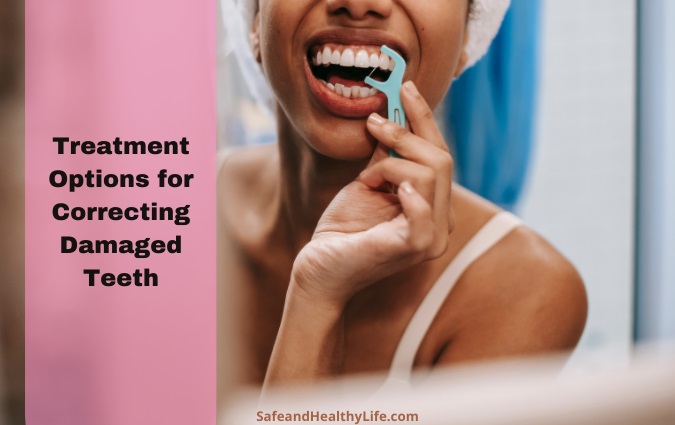
When a tooth is damaged, a dentist will usually do everything in their power to preserve the remaining tooth matter.
Unfortunately, there may come a point when the damage is so severe that one or more teeth must be completely removed and replaced with dental implants or covered with veneers.
While those types of procedures might seem intimidating, they are fairly easy to carry out and have high success rates.
Here is a quick look at the benefits of restorative dental surgery and some signs that it might be time for you to visit a cosmetic dentist.
Common Causes of Tooth Damage
Even though healthy adult teeth tend to be fairly sturdy, they must still stand up to quite a bit of damage over the years.
One of the most common causes of tooth damage is second-rate hygiene habits. Brushing and flossing a few times a day will greatly reduce your risk of tooth decay, but you might still develop cavities at some point over the years.
If a cavity isn’t addressed right away, then the decay could make its way toward the interior of the tooth. Once it reaches the pulp of the tooth, a more comprehensive treatment will be needed.
In addition to daily wear and tear, some people are born with naturally crooked teeth or a lopsided smile.
For those patients, restorative treatments should be carried out as soon as possible so that they don’t have to deal with major surgical operations down the road.
When a smile is crooked or the teeth are different sizes, then a patient is going to have a much higher risk of dental fractures. Luckily, porcelain veneers can often be used if the imperfections are addressed early on.
A Closer Look at Porcelain Veneers
A veneer is nothing more than a small strip of porcelain that is placed over the front of a tooth.
Each veneer that goes into a patient’s mouth is made custom, and that means they are going to look just like natural teeth.
To put a veneer in place, the dentist will first need to take off a very small layer of the tooth so that the sliver of porcelain will settle properly.
Once the material has been removed, the veneer is bonded to the tooth with a powerful adhesive. Veneers are also a good option for minor gaps between the teeth and severe discoloration.
Dealing With Extensive Damage
Veneers are extremely durable and can have a huge impact on a patient’s smile, but they aren’t the best choice in every situation.
If a tooth can’t be saved, then a dentist will usually suggest removing it entirely and replacing it with a dental implant. An implant is a custom crown that is placed on a titanium rod.
The rod is implanted into the patient’s jaw, and it forms a very strong bond with the bone over time. In many cases, dental implants will last a lifetime as long as patients continue to care for their teeth and gums.
Preventing Future Problems
Once your restorative procedure has been carried out, you must remain diligent if you want to prevent future problems.
While those devices are very strong, they might become damaged if you don’t continue to brush, floss, and schedule checkups with your dentist.
If damage does occur, then you should immediately meet up with your cosmetic dentist so that issues can be corrected.
In most cases, veneers and implants can easily be replaced during a single appointment as long as the damage isn’t too severe.
About The Author:
Ann Lewis enjoys the art of writing and has experience in various spheres of the craft. By blending information, with advice and impromptu jokes, she writes articles that not only have something to teach but are also light, easy to read.




